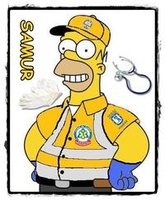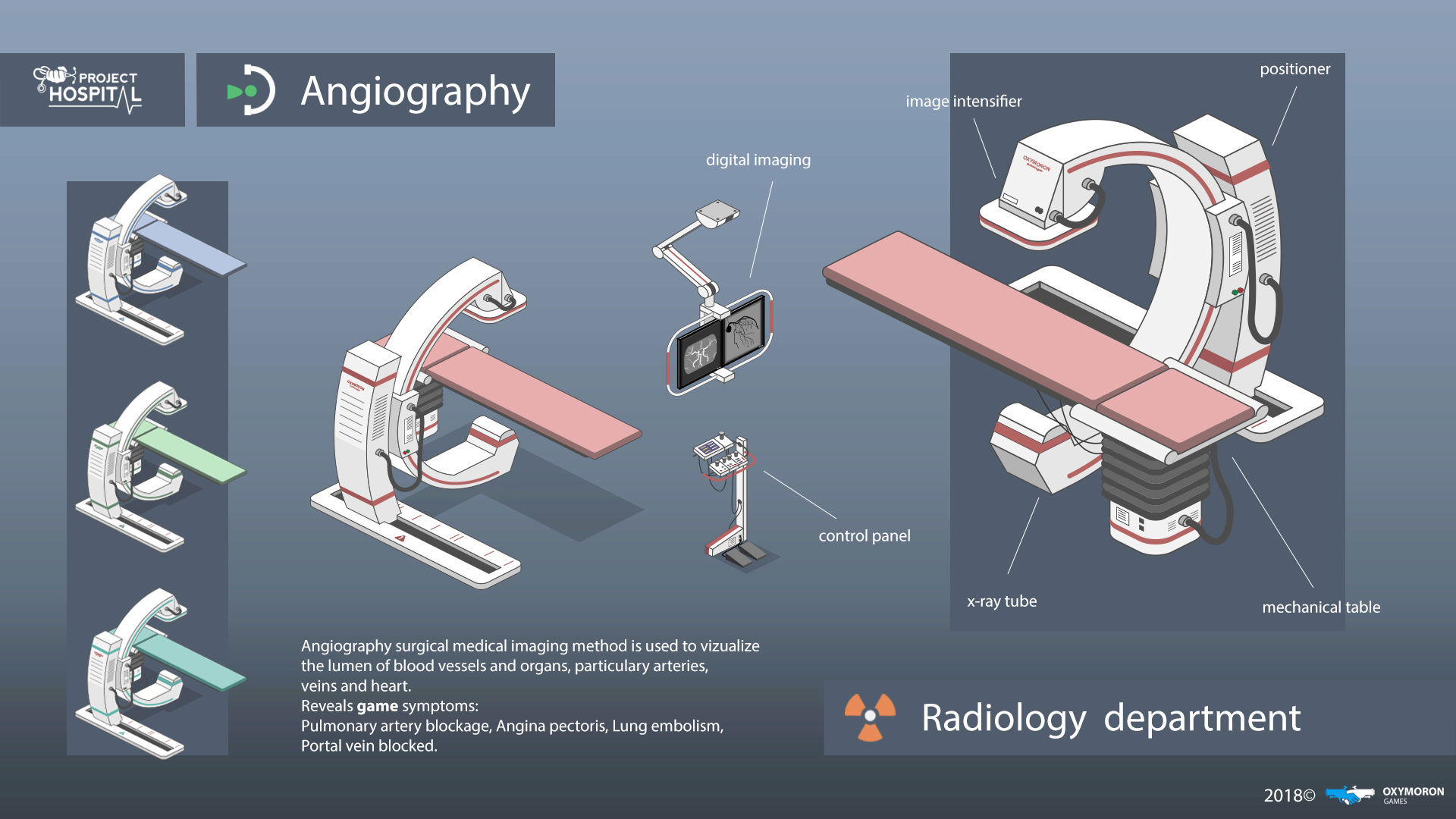2018_04_06 - Concept: Radiology
+3
jan.oxymoron
Dysp
roman.oxymoron
7 posters
 2018_04_06 - Concept: Radiology
2018_04_06 - Concept: Radiology
Fri Apr 06, 2018 2:17 pm
 DyspModerator
DyspModerator- Posts : 86
Reputation : 12
Join date : 2018-03-29
Age : 36
Location : Denmark
 Re: 2018_04_06 - Concept: Radiology
Re: 2018_04_06 - Concept: Radiology
Fri Apr 06, 2018 3:53 pm
Hm. Angina Pectoris is a symptom and it makes very little sense that this could be revealed by Angiography, since it's a subjective complaint.
Instead I bet you are thinking of Coronary Artery Disease: https://en.wikipedia.org/wiki/Coronary_artery_disease
Instead I bet you are thinking of Coronary Artery Disease: https://en.wikipedia.org/wiki/Coronary_artery_disease
 jan.oxymorondeveloper
jan.oxymorondeveloper- Posts : 2309
Reputation : 336
Join date : 2018-03-23
 Re: 2018_04_06 - Concept: Radiology
Re: 2018_04_06 - Concept: Radiology
Fri Apr 06, 2018 5:43 pm
Dysp wrote:Hm. Angina Pectoris is a symptom and it makes very little sense that this could be revealed by Angiography, since it's a subjective complaint.
Instead I bet you are thinking of Coronary Artery Disease: https://en.wikipedia.org/wiki/Coronary_artery_disease
Hello!
 DyspModerator
DyspModerator- Posts : 86
Reputation : 12
Join date : 2018-03-29
Age : 36
Location : Denmark
 Re: 2018_04_06 - Concept: Radiology
Re: 2018_04_06 - Concept: Radiology
Fri Apr 06, 2018 6:12 pm
'Arterial stenosis' would be more accurate, but I wouldn't exactly call this a 'symptom'. It's a finding.
Here is how Wikipedia describes a symptom, which I find very accurate:
A symptom is a departure from normal function or feeling which is noticed by a patient, reflecting the presence of an unusual state, or of a disease. A symptom is subjective, observed by the patient, and cannot be measured directly, whereas a sign is objectively observable by others.
[Source]
When doing tests, we are looking for 'clues' that can determine a diagnosis. We order these tests based on the symptoms that a patient describe and the clinical examination (objectively looking for signs/clues).
This is an extremely simplified work flow:
1. Subjective anamnesis
2. Objective medical examination
3. Order relevant tests
4. Test results conclude the diagnosis. If these aren't conclusive, we run more tests to be sure (and sometimes you gotta treat before having a diagnosis, eg. when suspecting meningitis)
5. Treatment based on diagnosis
6. Follow up to see whether treatment was succesful or not
Here is how Wikipedia describes a symptom, which I find very accurate:
A symptom is a departure from normal function or feeling which is noticed by a patient, reflecting the presence of an unusual state, or of a disease. A symptom is subjective, observed by the patient, and cannot be measured directly, whereas a sign is objectively observable by others.
[Source]
When doing tests, we are looking for 'clues' that can determine a diagnosis. We order these tests based on the symptoms that a patient describe and the clinical examination (objectively looking for signs/clues).
This is an extremely simplified work flow:
1. Subjective anamnesis
2. Objective medical examination
3. Order relevant tests
4. Test results conclude the diagnosis. If these aren't conclusive, we run more tests to be sure (and sometimes you gotta treat before having a diagnosis, eg. when suspecting meningitis)
5. Treatment based on diagnosis
6. Follow up to see whether treatment was succesful or not
 Sparkyresident
Sparkyresident- Posts : 16
Reputation : 2
Join date : 2018-03-30
Location : Germany
 Re: 2018_04_06 - Concept: Radiology
Re: 2018_04_06 - Concept: Radiology
Fri Apr 06, 2018 10:36 pm
Well the angiograph you mapped out here is not used as an diagnosis tool by itself, its used for the intervention and maybe before to definitely safe the diagnosis.
It is used for an PTA percutane transluminal angioplasty (https://en.wikipedia.org/wiki/Angioplasty).
All the symptoms/diseases you meantioned are diagnosed elsewhere:
pulmonary artery blockage = lung embolism (disease) - CT with contrast agent (emergency case)
angina pectoris (symptom) - Coronary artery disease (well disease) - well a lot of diagnostics, modern method: Magnetic resonance imaging; usual method: echo, ecg, cardiac stress test
portal vein blocked (disease) = portal vein thrombosis (https://en.wikipedia.org/wiki/Portal_vein_thrombosis) - I am not sure how, but it is treated elsewhere I think
As an Intervention you can use this gadget for:
PTA: Peripheral artery disease, Coronary artery disease, basically for all artery stenosis (not for vein thrombosis)
Endovascular aneurysm repair: Aortic aneurysm (https://en.wikipedia.org/wiki/Aortic_aneurysm)
Thoracic endovascular aortic repair: Aortic dissektion (But this would usually be done by an open surgery)
Transcatheter aortic valve implantations (TAVI): aortic valve stenosis (https://en.wikipedia.org/wiki/Hybrid_cardiac_surgery)
for the diagnosis before you start the intervention you always need an MRI or an CTI
It is used for an PTA percutane transluminal angioplasty (https://en.wikipedia.org/wiki/Angioplasty).
All the symptoms/diseases you meantioned are diagnosed elsewhere:
pulmonary artery blockage = lung embolism (disease) - CT with contrast agent (emergency case)
angina pectoris (symptom) - Coronary artery disease (well disease) - well a lot of diagnostics, modern method: Magnetic resonance imaging; usual method: echo, ecg, cardiac stress test
portal vein blocked (disease) = portal vein thrombosis (https://en.wikipedia.org/wiki/Portal_vein_thrombosis) - I am not sure how, but it is treated elsewhere I think
As an Intervention you can use this gadget for:
PTA: Peripheral artery disease, Coronary artery disease, basically for all artery stenosis (not for vein thrombosis)
Endovascular aneurysm repair: Aortic aneurysm (https://en.wikipedia.org/wiki/Aortic_aneurysm)
Thoracic endovascular aortic repair: Aortic dissektion (But this would usually be done by an open surgery)
Transcatheter aortic valve implantations (TAVI): aortic valve stenosis (https://en.wikipedia.org/wiki/Hybrid_cardiac_surgery)
for the diagnosis before you start the intervention you always need an MRI or an CTI
 scorpycfsresident
scorpycfsresident- Posts : 25
Reputation : 8
Join date : 2018-03-26
Age : 40
Location : Australia
 Re: 2018_04_06 - Concept: Radiology
Re: 2018_04_06 - Concept: Radiology
Sat Apr 07, 2018 3:39 am
Well, technically angiography is a diagnostic process but it's usually not done unless you're almost certain you will be doing an intervention. It is rare but still possible that an angiogram would be done without intervention, ie, prinzmetal finding or diffuse disease not amenable to point correction. It's kind of semantics though
 scottivmedic
scottivmedic- Posts : 1
Reputation : 0
Join date : 2018-04-07
Location : Leeds, UK
 Re: 2018_04_06 - Concept: Radiology
Re: 2018_04_06 - Concept: Radiology
Sat Apr 07, 2018 2:12 pm
As has been said, many of the diagnoses listed are made using CT/MRI. I work in CT and specialise in Cardiac imaging. We perform TAVI and Coronary Angiography CT scans, these patients would then go to the 'cath lab' or vascular department for intervention utilising equipment such as that shown above. CT is preferred as a first-line imaging modality for these patients as it's less invasive than sending the patient straight for an interventional angiogram. As for the design of the equipment, well done it's spot on!
 JoshiSpanish moderator
JoshiSpanish moderator- Posts : 54
Reputation : 18
Join date : 2018-03-26
Age : 35
Location : Madrid, Spain
 Re: 2018_04_06 - Concept: Radiology
Re: 2018_04_06 - Concept: Radiology
Sat Apr 07, 2018 3:03 pm
Too many professionals in the forum 
I expect a realistic hospital game like Project Hospital seems it but not a simulator.
I think is impossible to show every aspect of medical procedures and hospital life.
I expect a realistic hospital game like Project Hospital seems it but not a simulator.
I think is impossible to show every aspect of medical procedures and hospital life.
Permissions in this forum:
You cannot reply to topics in this forum|
|
|



